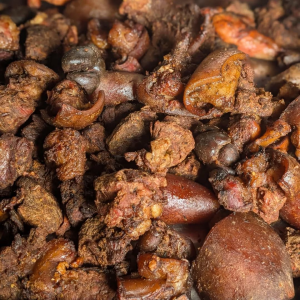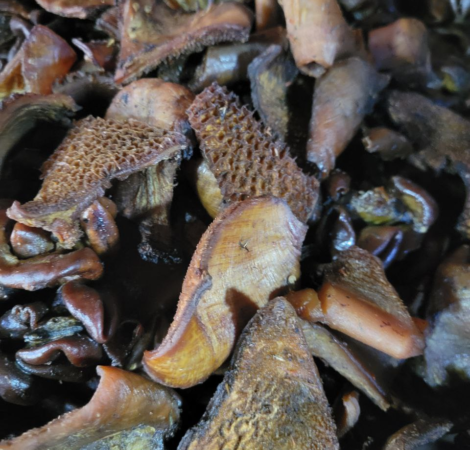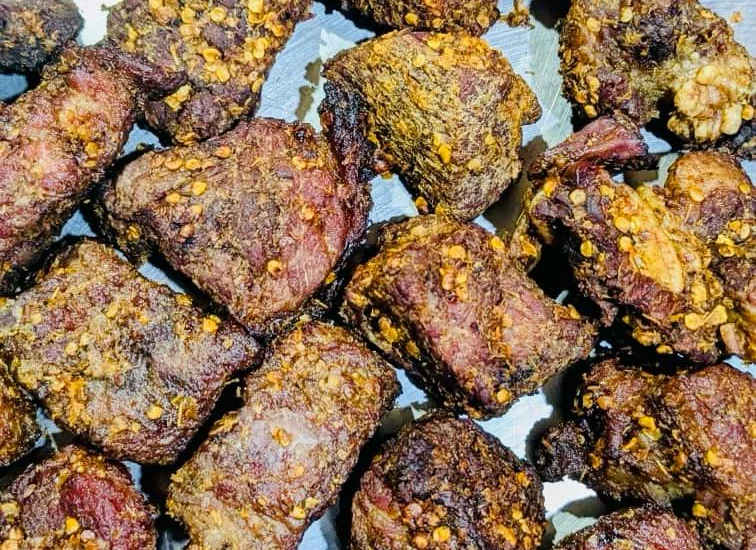If you’ve ever spent the festive season in the village, you know the real star isn’t just the jollof rice or the fried chicken, it’s that smoky, dried meat hanging proudly in the backyard.
That irresistible aroma isn’t just for flavour; it’s part of a time-honoured preservation method.
But beyond the nostalgia and taste, how effective is smoking as a way to keep meat fresh?
Let’s see how this traditional technique stacks up when it comes to preserving meat safely and deliciously.
What Does It Mean to ‘Preserve’ Meat?
Preserving meat is the process of treating it in ways that prevent spoilage, extending its shelf life, and maintaining its quality.
This can involve a variety of techniques from salting and drying to more modern methods like refrigeration.
Each method aims to inhibit bacterial growth and oxidation, ensuring that the meat remains safe and palatable over time.
When asking “how to preserve meat,” smoking emerges as an age-old practice that brings its advantages and challenges.
How Smoking Works as a Preservation Method
Here’s how smoking goes beyond flavour to actually help preserve your meat:
- Smoke as a Natural Bacterial Barrier
One of the primary reasons smoking is used as a meat preservation method is its ability to create a barrier against bacteria.
The smoke generated during the process helps to form a protective layer on the meat’s surface, effectively keeping harmful bacteria at bay.
This is especially important in deter the growth of spoilage organisms.
- Moisture Reduction and Extended Shelf Life
The act of smoking also reduces the moisture content in the meat. Lower moisture levels are crucial because bacteria require water to thrive.
By drying out the meat during the smoking process, you significantly increase its longevity.
This moisture reduction means that when folks ask, “how long does smoked meat last?” the answer can often be much longer than non-preserved means.
- Antimicrobial Properties in Wood Smoke
Not only does the smoke create a physical barrier, but it also contains certain compounds that have antimicrobial properties.
Phenols and other organic compounds found in wood smoke can help kill off potential pathogens.
These compounds can enhance the safety of the meat, providing peace of mind for consumers and food enthusiasts alike.

Types of Smoking: Which One Preserves Better?
Source; Freepik
When discussing smoking as a preservation method, it’s important to understand that not all smoking techniques are created equal.
The two primary methods are hot smoking and cold smoking, each with its effects on preservation.
- Hot Smoking
Hot smoking involves cooking the meat at temperatures above 140°F (60°C), which essentially cooks the meat while it is infused with smoke.
This method not only preserves the meat by reducing moisture but also ensures that any potential bacteria are killed in the process.
Typically, hot-smoked meats are ready to eat and have a noticeably different texture compared to their cold-smoked counterparts.
- Cold Smoking
Cold smoking, on the other hand, occurs at temperatures below 90°F (32°C).
This method does not cook the meat but instead allows it to take on smoke flavor and develop a pellicle, a tacky surface layer that can aid in preservation.
While cold smoking can extend shelf life, the safety depends on proper curing and handling, so it often requires more attention and skill.
FAQ(Frequently Asked Question)
- Does Smoked Meat Last Without Refrigeration?
The answer can vary based on several factors. Generally, hot-smoked meats can be stored without refrigeration for a short period, but for long-term preservation, refrigeration or freezing is recommended.
- When You Should Still Refrigerate or Freeze It
If you intend to keep smoked meat for longer, especially if it has been cold-smoked, you should definitely refrigerate or freeze it.
Conclusion
Smoking meat can be a reliable preservation method when done correctly.
It not only enhances flavor but also inhibits spoilage through various mechanisms.
So, If you’re looking to explore smoked meat options, Beem Farms offers a selection of smoked goods that promise quality and flavour, so, why not taste the tradition yourself?
Premium Deboned Small Pack Ram Meat (Ready-To-Eat, Without Offals) – 25 pieces

Premium Deboned ¼ Smoked Ram Meat (Ready-To-Eat, Without Offals) – 35 pieces

Premium Deboned ½ Smoked Ram Meat (Ready-To-Eat, Without Offals) – 70 pieces

Premium Deboned Full Smoked Ram Meat (Ready-To-Eat, Without Offals) – 140 pieces

Smoked Offal – 20 Pieces

Deboned Small Pack Spicy Ram Meat (Travel Dry) – 25 Pieces



